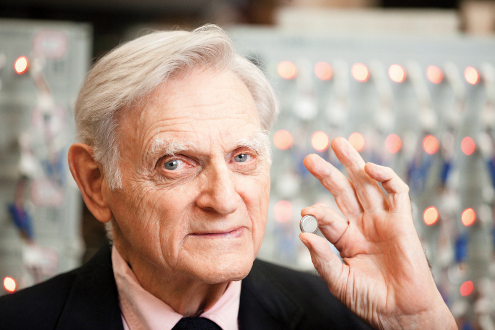- Samsung and exploding batteries
- Rwanda uses drones to deliver blood
I watched an excellent and timely documentary on the BBC last night. “Hypernormalisation” is the latest offering from Adam Curtis and it charts a course through a series of troubling phenomena that currently dominate our news feed — the Syrian crisis, the rise of nationalism, Trump and Putin.
His base case is that we cannot interpret these events without recognising that political leaders are actively seeking to spread a state of bewilderment and powerlessness.
Case in point: Henry Kissinger and US relations in the Middle East.
Instead of having a comprehensive peace for Palestinians, Kissinger’s plan was to split the Middle Eastern world and make everyone dissatisfied, constantly focusing on specific problems and individual relations in order to maintain control.
Putin follows a similar strategy, inventing dissident groups and funding them, fueling conspiracy theories as a distraction technique until people can no longer trust what is reported in the news.
Trump has learned the same trick — ignoring the truth completely as he simply plays America’s fears and desires back to itself.

In short: we live in a post-truth world of competing narratives.
Political leaders feed us narratives. Silicon Valley feeds us narratives. It can be confounding.
I believe many of the issues driving today’s toxic politics are the result of technological disturbances that happened some time ago: automation, the blitzscaling of serial monopolies, platform takeover, floods of confounding data, cascading error in complex systems.
And just as financial innovation drove change in the last two decades, technological change — which is just as opaque — will be the main catalyst for economic and political disturbances for the decade ahead.
You can watch the Curtis documentary on BBC iPlayer.
Batteries are a huge story
The Samsung battery crisis turns out almost certainly to be a ‘crimping’ crisis…trying to cram in too many components including batteries in a desperate bid to offer the highest performance, smallest and lightest device possible to compete with Apple — the masters of tight integration and software control at component level.
The problem is that high density lithium-ion batteries short circuit if there is even a small fault or damage to the extremely thin separators that keep the battery elements from triggering ‘thermal runaway.’
Of course, there is no let up in the sprint marathon to ‘better, faster, smaller, cheaper’ devices and it seems there’s no alternative to lithium-ion (at least for the next five years). So now there will be even more call for ‘tear downs’ of new devices by independent experts to assess risks.
It’s serious. Incendiary Note 7s have put a brake on the collaboration between Facebook and Samsung over Oculus on GearVR: the head wear for those who can’t ante up to Rift.
All a clear signal that for VR and AR to ‘cross the chasm’ into the mainstream using lightweight, stylish head wear without the user having to carry battery packs in pocket, we’ll need a step change in battery technology.
It was apposite that over the weekend the BBC carried an interview with the 93 year John Goodenough (below) who made the scientific breakthrough that yielded the lithium-ion battery thirty five years ago.

He’s still hard at work in the lab and reckons battery technology needs some step changes rather than Elon Musk’s tweaking and incremental improvement engineering.
He sees a next big breakthrough to match what he did with lithium-ion within the next five years, and he reckons that he is going to be the one to achieve it.
He says that his electrolyte breakthrough will turn the world’s energy provision over battery-stored sun and wind. Of course, that’s Musk’s vision, as well as BYD in China.
Novobiotic creates breakthrough antibiotic
Does unlisted R&D company Novobiotic own one of the most valuable patents in the world?
According to a gathering consensus in the scientific community, teixobactin is the first new generation anti-biotic to show real promise to see off drug-resistant infections caused by ‘super bugs’ and the effects of bacterial mutations resulting from adaptations and gene swapping within what Richard Lewontin famously called the microbial world wide web.
After Asia? Africa
Finally, expect more and more talk about Africa as an investment destination as several years of 3G connectivity bear fruit and the impact of the fibre optic cable off East Africa kicks in.
Just noted: Rwanda has become the first country in the world to use drones (supplied by US company Zipline) to deliver blood to outlying district clinics and hospitals having been the first African country to install nationwide optic fibre, while Kenya led the world years ago in mobile-based money transfer with MPesa.
Kenya has created, with the help of Microsoft and Cisco among others, a thriving cluster dubbed Silicon Savannah from which new online applications are being spawned and young Kenyans are connecting to a global economy.
A singular part of the emerging African story is the dominant role young women entrepreneurs are playing, whether in Nigeria, Rwanda or Kenya.
More to follow on Africa where I spent five years of my life and am still heavily involved.
In the meantime, a few articles worth reading…
A new project for tech billionaires
Interesting podcast with Sam Arbesman about cascading error and his book “Overcomplicated”, speaking about cascading error.
A pointed attack on start up culture:
Drop me a message here if you have any queries or questions.
Follow me on twitter here.
